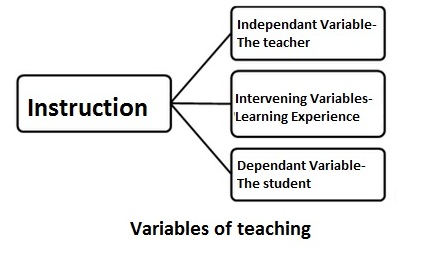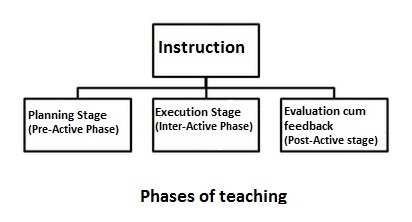Dr. V.K. Maheshwari, Former Principal
K.L.D.A.V(P.G) College, Roorkee, India
Very few topics in the whole history of mankind can have given rise to so many absurdities, misunderstandings and misconceptions as the topic of hypnosis. Hypnosis involves a person’s ability to set aside critical judgment without relinquishing it completely, and to engage in make-believe and fantasy. Hypnosis in itself is not a science; its phenomena, though, have proven to be highly amenable to experimental research employing the methodology and procedures of scientific enquiry
From the very beginning the study of hypnosis has been tied up with fantastic conceptions like , animal magnetism , the influence of the stars , and similar tarradiddle. Even nowadays popular conceptions of hypnosis are extremely confused, and journalistic reports in newspapers have done but little to clarify the issue involved.
The history of hypnosis has something important to say about the scientific endeavour in general. One way of looking at how Science progresses is through theories changing over time. And a theory may be thought of as a metaphor, or an as if construct. A metaphor is chosen to help elucidate or explain a phenomenon that is not understood, in terms of other things that seem to be better understood. One metaphor gets replaced by another one that seems a better fit of the facts.
It might have been thought that when serious scientists had exercised the devil of ‘animal magnetism ‘in this through going fashion, and when so much experimental work was available to show the influence that was really operating, a period of patient, quite research would follow, untroubled by arguments about the ancient Mesmeric doctrines. However, this was not to be, and the person responsible for the revival of the doctrine of animal magnetism was a well known French anatomist named Charcot.
Charcot was very much afraid of being deceived by his subjects, and determined that his experiments should be as rigorous and ultra-scientific as his physiological work. He concluded from his studies that hypnotism showed three definite stages;
- The lethargic stage, which was induced by closing the subject’s eyes, was characterised by an inability on the part of the subject to hear or to speak .Also contractures of a specified nature resulted when certain nerves were pressed.
- The cataleptic stage was produced by opening the subject’s eyes while he was in lethargic stage .Now limbs would remain in any position in which they are placed by the experimenter, and the subject was still unable to hear or speak.
- The somnambulistic stage could then be induced by applying friction to the top of the head, and it is this somnambulistic condition which appeared similar to what we would now call an ordinary hypnotic trance.
Another phenomenon much stressed by Charcot was that of transference. Sometime he found that the contractures, catalepsies, and so on would appear only on one side of the body. If now a large magnet was brought close to the limbs in question, the symptoms could be displaces at once to the other side of the body.
Charcot ,J.M.the great French neurologist put forward a theory to specify the characteristics in the subject to be hypnotised . According to him hypnosis could be induced only in abnormal and neurotic subjects , particularly in hysterics and that hysteria was casually related to hypnosis, Bernheim , a professor in medical school at Nancy, who became acquainted with Liebeault reported that in his work and that of Liebealt many hundreds of entirely normal individuals had been successfully hypnotised and that consequently there was no special relation of any kind between hypnosis and mental abnormalities. Now all modern workers are agreed that the hypnotic trance can be produced at least as well in mentally normal as in mentally abnormal individuals.
Another old and respectable theory sees hypnotism as a modified form of sleep. The very term ‘hypnosis’ shows that originally the sleep like characteristic of the hypnotic trance suggested an identification of two states, and Pavlov,the famous Russian psychologist comes foremost in claiming that sleep and hypnosis are similar, involving a spread of cerebral inhibition in both cases. This theory is almost certainly false. The physiological reaction of the organism under hypnosis is quite different from that which is observed in sleep. Thus certain reflexes are abolished in sleep, but not under hypnosis. Electro-encephalogram recordings, or ‘brain waves’, show different characteristics in the two states. The evidence is very strong in opposing an identification of these two states.
A more acceptable hypothesis would regard hypnosis as a conditioned response. Such a view might in due course be elaborated into a proper theory, but at the moment it fails completely to account for many of the phenomena associated with hypnosis. How , one might ask, could conditioning account for spontaneous post-hypnotic amnesias? While conditioning cannot be completely rejected as a likely part of a true theory of hypnosis, certainly by itself it is not sufficient.
Much the same might be said of dissociation as an explanation of hypnotic phenomena. It is well known that part of the cortex and the central nervous system can be dissociated from the reminder of many hypnotic phenomena seem to be of this character. However it will be difficult to account for hypnosis in terms of dissociation , because very little is , infect known about association , so that we would mearly be explaining one unknown by another.
A similar objection might be presented against another view which looks upon hypnosis as an exaggerated form of suggestibility.While,undoubtly,there is a considerably increased degree of suggestibility in hypnosis, it is idle to seek for an explanatory principle in the laws of suggestibility, because very little is known about suggestibility itself. Again we would merely be attempting to explain one unknown to another.
Among the more esoteric theories is a Freudian one, according to which susceptibility to hypnosis depands on the extent of ‘transference’ formed between the subject and the hypnotist. The ‘transference’ is a special relationship which revives attitudes originally present in the parent-child relationship. Added to this are various erotic components which are supposed to be present in hypnosis, which is considered to be a manifestation of Oedipus complex, of masochistic tendencies, and so on.
Weirdest of all is a theory which states essentially ‘ that the phenomena of hypnosis result from the subjects motive to behave like a hypnotized person, as defined by hypnotist, and as understood by the subject’. This is perhaps the most question-begging of all, because it leaves unanswered the two crucial questions as to why the subject should want to behave in this fashion, and how he manages to do this. It is all very well to say a person wants to behave like a hypnotized subject, but how does that help him to produce analgesia to an operation?
Most promising perhaps is a theory of ideo-motor action. There is ample experimental evidence to show that ideas of certain movements are closely related to the execution of these movements. If electrodes and amplifier are connected to the muscles of the arm and the subject is told to lie quite still on a couch, but to imagine that he is lifting that arm, then a barrage of nervous impulses is recorded as passing through the nerves and into the muscles which would have been used had the movement, infect, been executed. Thus nerve transmission and mental images or ideas are closely related, and, indeed , it appears that the one is never found without the other. Without going into the question of which causes which, the mutual interdependence of mental and physical phenomena does not seem to be in doubt. Under these conditions, the possibility of achieving changes in a person’s behaviour through verbal means, as in hypnosis, appears possible. At best, this is only a partial theory and it stands very much in need of considerable amplification. If it could be combined with some such form of inhibition theory, we might here have the beginning of a true theory of hypnosis .At the moment such a theory cannot be said to exist, and all that we can do is to note the experimental facts, which are reasonably well established, and hope that a greater interest in these important discoveries will eventually lead to greater knowledge.
Thus, Mesmer can be seen as embracing the metaphor of Animal Magnetism and as arguing that it is as if the behaviors he observed were the product of this invisible force that he could harness, accumulate in his body, and transfer to sick people. Faria with lucid sleep, Puysegur with artificial somnambulism, and Braid with hypnosis were all saying that it was as if the magnetized person was in a state akin to nocturnal sleep. Liebeault and Bernheim adopted the metaphor of suggestibility for precisely the same reason, though their logic was a little askew; they maintained that since suggestion is an essential ingredient of the hypnotic process, suggestibility must be the key as if formulation for understanding it. The same can be said of Charcot in seeking to link hypnosis with hysteria, since many of the behaviors found in hysteria could be reproduced in hypnosis — it was to him as if hypnosis followed processes similar to those he had observed in this particular class of patients.
Formal and “Disguised” hypnosis
Formal hypnosis is straightforward; one person (the hypnotist) informs another person) that she/he, with the person’s permission, will attempt to induce hypnosis.
“Disguised” hypnosis, by contrast, is an imagination-based procedure that the practitioner does not represent as hypnotic in nature. Nevertheless, it taps into the mechanisms thought to underlie responsiveness to hypnosis — namely imagination and absorption . Here, it needs to be emphasized that a large variety of procedures can be represented as hypnosis.
Earlier formulations of ‘disguised” hypnosis stem from the clinical work of Milton Erickson during the 1950s and experimental research of Theodore X. Barber during the 1960s. A renewed interest in disguised hypnosis has developed in recent years as the result of it being adopted by many therapists who search for repressed memories of childhood sexual abuse. In practice, procedures such as guided imagery, regression work, dream analysis, “relaxation” and represented as “truth serum” function as hypnosis by another name.
To evaluate the behaviour of a hypnotized person , it is important that the context in which it occurs be examined. One can arrive at quite radically different conclusions about the nature of hypnosis, depending upon whether it has been dispensed on the stage for entertainment purposes, in the clinic for therapeutic reasons, or in the forensic contest in an attempt to bolster the fragmented memory of a crime victim or witness who may have been traumatized by such an experience.
Stage hypnosis
Stage hypnosis is the foremost source of the stereotypes that abound about hypnosis. The belief that the hypnotized person is an automation, completely under the sway of the hypnotist is the most pervasive of all folkloric misconceptions about its phenomena. In actuality, candidates for stage hypnosis are screened by the stage hypnotist for a high level of hypnotizability. Once this is established, the next step is to determine that the volunteer endorses the “rules of the game” of stage hypnosis, which is to entertain an audience.
Therapeutic hypnosis
In therapeutic hypnosis has been utilized successfully as an adjunct, or ancillary, procedure in therapy that is psychoanalytic, gestalt, non-directive, or any of the many varieties of behaviour modification that are based upon learning theory. Therapeutic hypnosis is directed towards helping a person placed in the role of patient to alter his/her behaviour by replacing self-defeating habits and patterns with adaptive ones. Therapy focused on excavating “lost” memories of childhood abuse, by contrast, is not therapeutic since it seeks to treat psychic distresses by resort to a theory of repressed incest memories and a belief that such “insight” leads to the automatic dissipation of symptoms. There is no evidence to support these beliefs.
Forensic hypnosis
Forensic hypnosis is predicated upon some questionable assumptions, particularly the belief that memory is reproductive rather than reconstructive, and that there is a hypnotic hypermnesia effect. It is true that seemingly inaccessible memories may emerge in a hypnotic context, but there is never any certainty that when this occurs in hypnosis, it is caused by hypnosis. In addition, , hypnotically elicited recollections are not necessarily true, no matter how vivid and subjectively compelling they may be to the hypnotized person or to an observer of his/her behaviour.
Experimental, laboratory hypnosis. In the laboratory context is that the hypnotized person agrees to assist an investigator to learn something additional about hypnosis and to contribute to a scientific understanding of it. This, despite token payment at best, and the likelihood of experiencing pain, boredom and fatigue over a prolonged period. This more altruistic role for the hypnotized person is in marked contrast to entertaining an audience, having one’s behaviour altered by clinical procedures, and “restoring” memories of a crime in a forensic setting.
General procedure of Hypnosis
There are many methods of producing hypnosis; indeed, almost every experienced hypnotist employs variations differing slightly from those of others. Perhaps the most common method is something along these lines. The hypnotist tries to obtain his subject’s co-operation by pointing out to him the advantages to be secured by the hypnosis, such as , for instance , the help in curing a nervous illness to be derived from the patient’s remembering in the trance certain events which otherwise are inaccessible to his memory. The patient is reassured about any possible dangers he might suspect to be present in hypnosis, and he may also be told that it is not a sign of Instability or weakness to be capable of being put in a hypnotic trance, but that, quite on the contrary, a certain amount of intelligence and concentration on the part of the subject is absolutely essential.
Next , the subject is asked to lie down on a couch, or sit in on easy chair. External stimulation is reduced to a minimum by drawing the curtains and excluding as far as possible, all disruptive noises.It is sometime helpful to concentrare the subjects attention onsome small bright object dangled just above eye-level, thus forcing him to look slightly upwards. This leads quickly to a fatigue of the eye-muscles , and thus facilitates his acceptance of the suggestions that he is feeling tired and that his eyes are closing. The hypnotist now begins to talk to the subject in a soft tone of voice, repeating endlessly suggestions to the effect that the subject is feeling drowsy, getting tired, that his eyes are closing, that he is falling in a deep sleep, that he cannot hear anything except the hypnotist’s voice, and so on and so forth. In a susceptible subject , a light trance is thus induced after a few minutes, and the hypnotist now begin to deepen this trance and to test the reactions of the subject by giving suggestions which are more and more difficult of execution. Thus he will ask the subject to clasp his hands together and tell him that it is impossible for him to separate his hands again. The subject, try as he may find, to his astonishment, that he cannot in actual fact pulls his hands apart. Successful suggestions of this kind are instrumental in deepening the hypnotic trance until, finally, in particularly good subjects, all the phenomena which will be discussed presently can be elicited.
This , very briefly, is the routine method of establishing a trance. It is very difficult to know just which of the elements mentioned are really important.
Hypnosis is not a dangerous procedure in itself, but complications may occur as the result of faulty technique on the part of the hypnotist, or from misperceptions on the part of the hypnotized person. The topic is a vast one . In terms of technical errors by the hypnotist, there is the occasional report of a hypnotized person failing to emerge from a trance. There are various ways of resolving this difficulty, but in a safe environment, the worst that can happen is that the hypnotized person finishes up having a prolonged sleep.
Sometimes, hypnotic age regression may elicit traumatic memories of past events; again, there exist straightforward procedures for relieving the painful emotion of such memories, regardless of whether they are based upon fact or fantasy. Further, there are data that show that the failure to cancel or remove a suggestion after it has been administered and tested in trance may lead to its post-hypnotic persistence. The simple remedy for this problem is for the hypnotist to be meticulous in canceling suggestions.
On the other hand, many of the complications that can occur with hypnosis stem from the hypnotized person’s perceptions of it. Most of them can be avoided by questioning the person carefully during the pre-hypnosis period about his/her knowledge and beliefs about hypnosis. Beliefs such as that the hypnotized person is an automaton, unable to resist any suggestion that is administered, or that the person may not be able to terminate trance, can best be met with factual knowledge, or even the invitation to resist a particular item during hypnosis.
It is genrally believed that the isolation, the quite and the darkness is important for hypnosis. Sucessful hypnoses have been carried out under noisy conditions, in broad daylight ,and even , as is well known, on the stage in the presence of thousands of people,Some hypnotists, infact, claim that these conditions are more favourable to the induction oh hypothsis than those of absolute quite and segregation. No experimental work, again , has been done on this question, but it may be surmised that different conditions suit different people , and that where as extraverts and hysterics may be more easily hypnotized under conditions of noise, excitement , and while in the limelight , introverted and anxious people might prefer the quite of the consulting-room. This however, has by no means been established as a fact.
Contrary to popular superstition, there is little difficulty in awakening the subject once the experimenter decides to end the trance . He usually suggests to the subject that when he ,the experimentater, counts up to ten, the subject will awaken from his sleep, that he will forget everything that has happened during the hypnotic trance, that he will feel well and refreshed , and that he will feel all the better for his experience. There are no records of any difficulties in awakening subjects along these lines, and even if the hypnotist should , for some reason, be unable to break off the hypnosis, all that would be likely to happen would be for the subject to fall into an ordinary sleep and wake after a few hours with no evil after-effects.
Again, the belief that post-hypnotic amnesia is permanent can be defused by explaining that amnesia is reversible, and that when the amnesia suggestion is administered, a post hypnotic cue will be given so as to relieve the amnesia. On some occasions, also, when an affect-laden memory is elicited, the operator may place the onus upon the hypnotized person to decide how much, if any, of the traumatic material s/he wishes to recall.
Many of the issues already discussed concerning the effects of hypnosis upon memory are controversial. There are those who believe that there is a hypnotic hypermnesia effect, or that confidence is not enhanced by hypnosis , A current major controversy concerns traumatic memory. Some argue that such memories are processed by the brain in a manner different from untraumatic memories; whereas everyday working memory is processed at the level of the hippocampus and its connecting areas, traumatic memories are thought to be processed by the limbic system. This may turn out to be true; currently there is insufficient evidence bearing on this limbic involvement for traumatic memories In addition, proponents of this view hold that traumatic memories, on account of their vividness (which nobody disputes) are more likely to be accurate (which is highly disputable).
The issue of memories “recovered” in psychotherapy has become controversial in an unexpected way. Some see it as an attack on all psychodynamically oriented clinicians who seek to understand a patient’s current difficulties in terms of his/her past experience.
Given that the effects of sexual abuse are highly variable, it would come as no surprise if it were found that a background of childhood sexual abuse is implicated in at least a proportion of cases diagnosed in every known clinical syndrome








